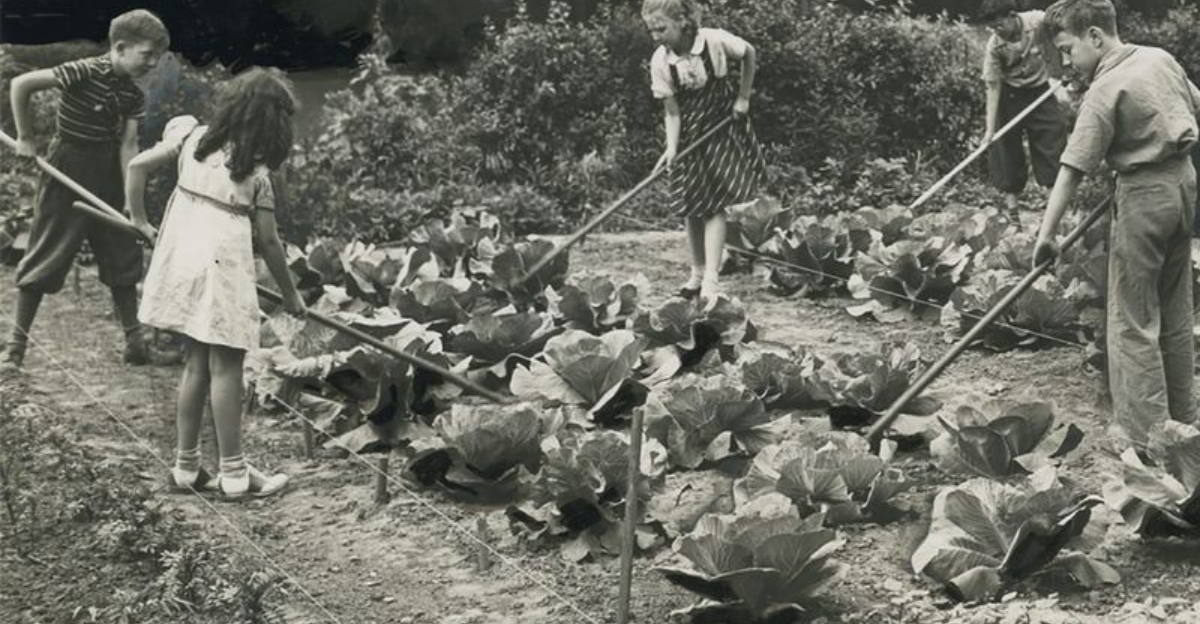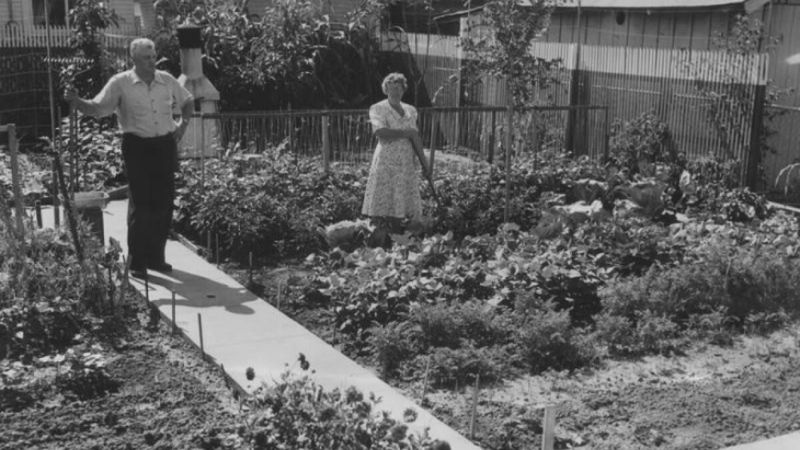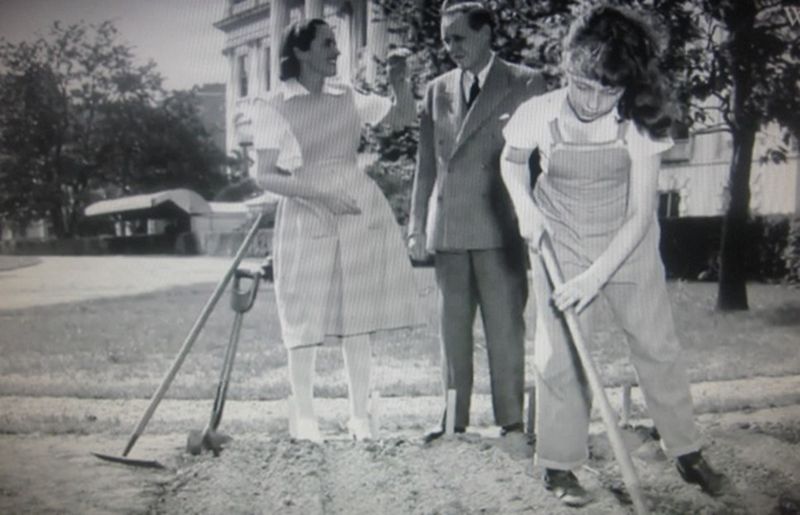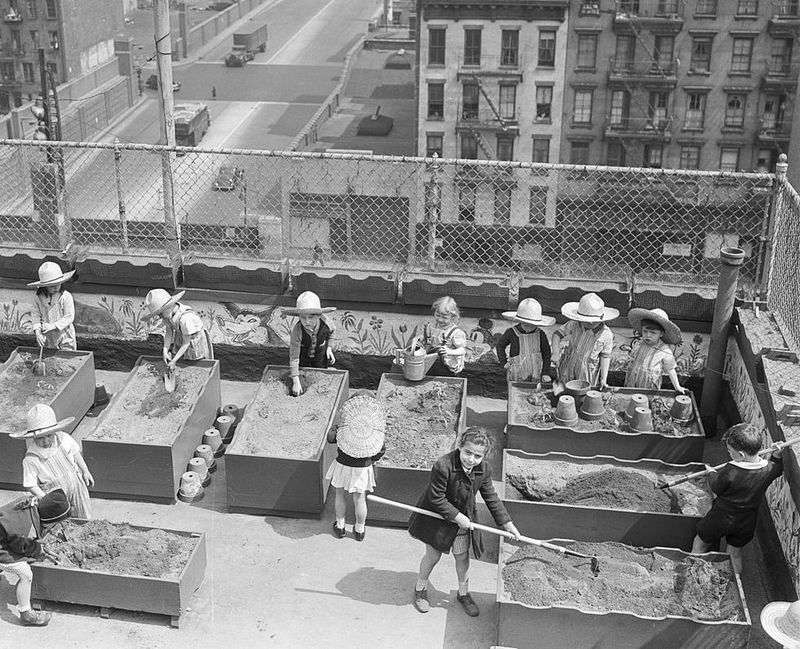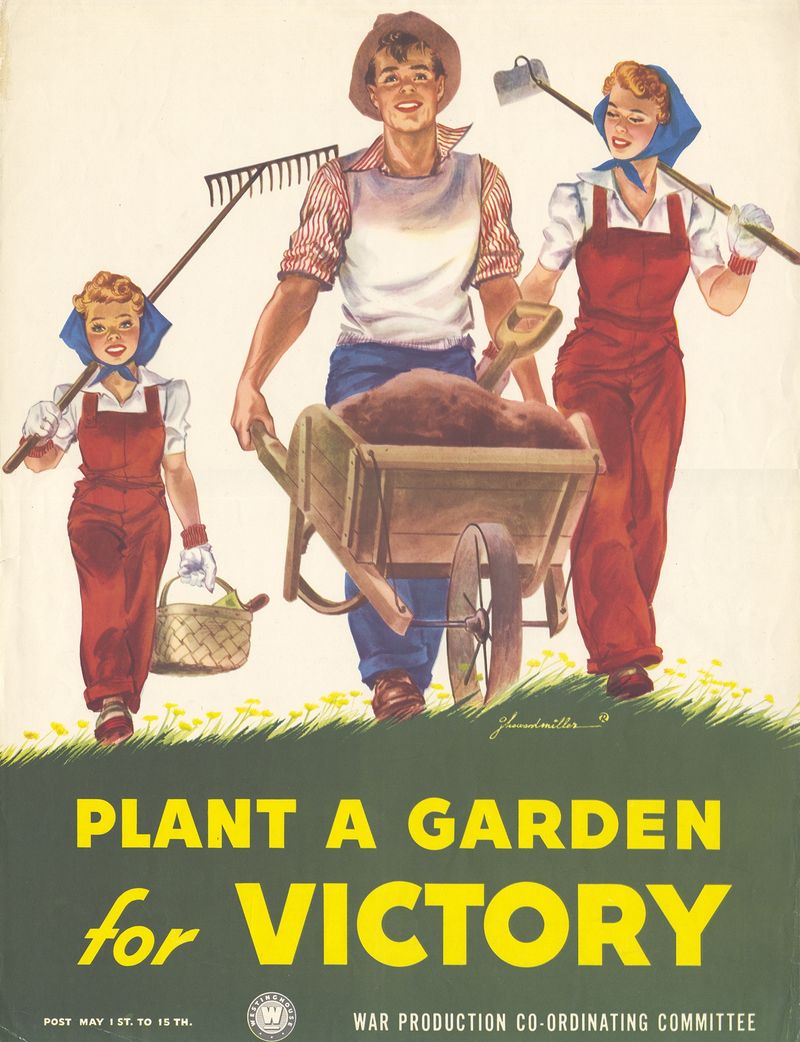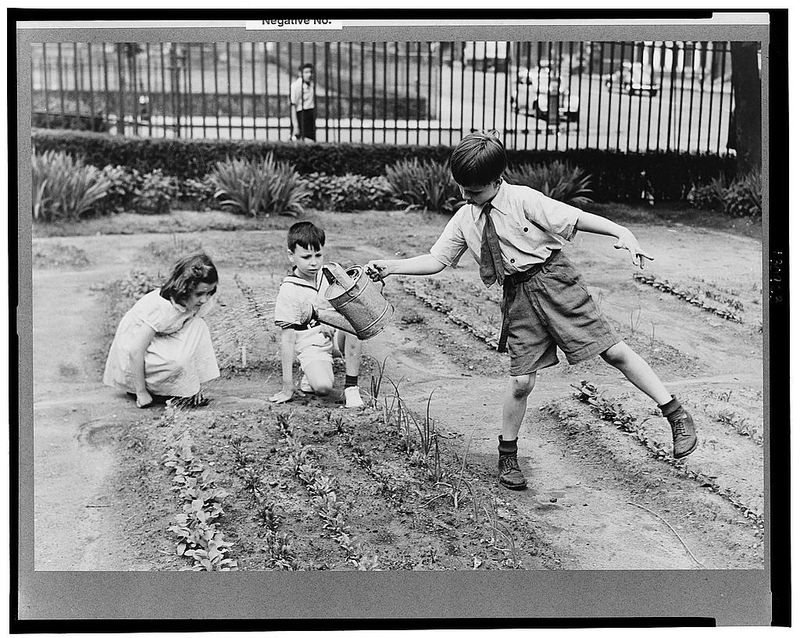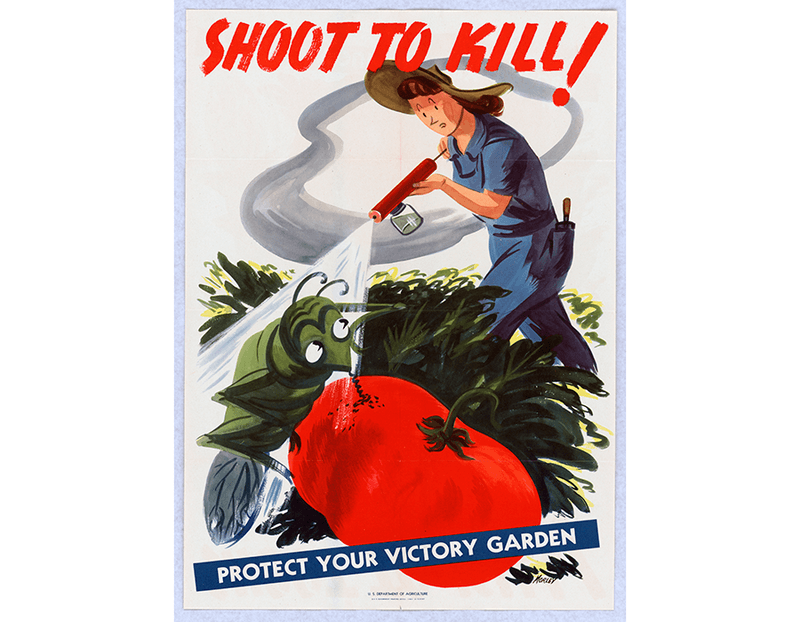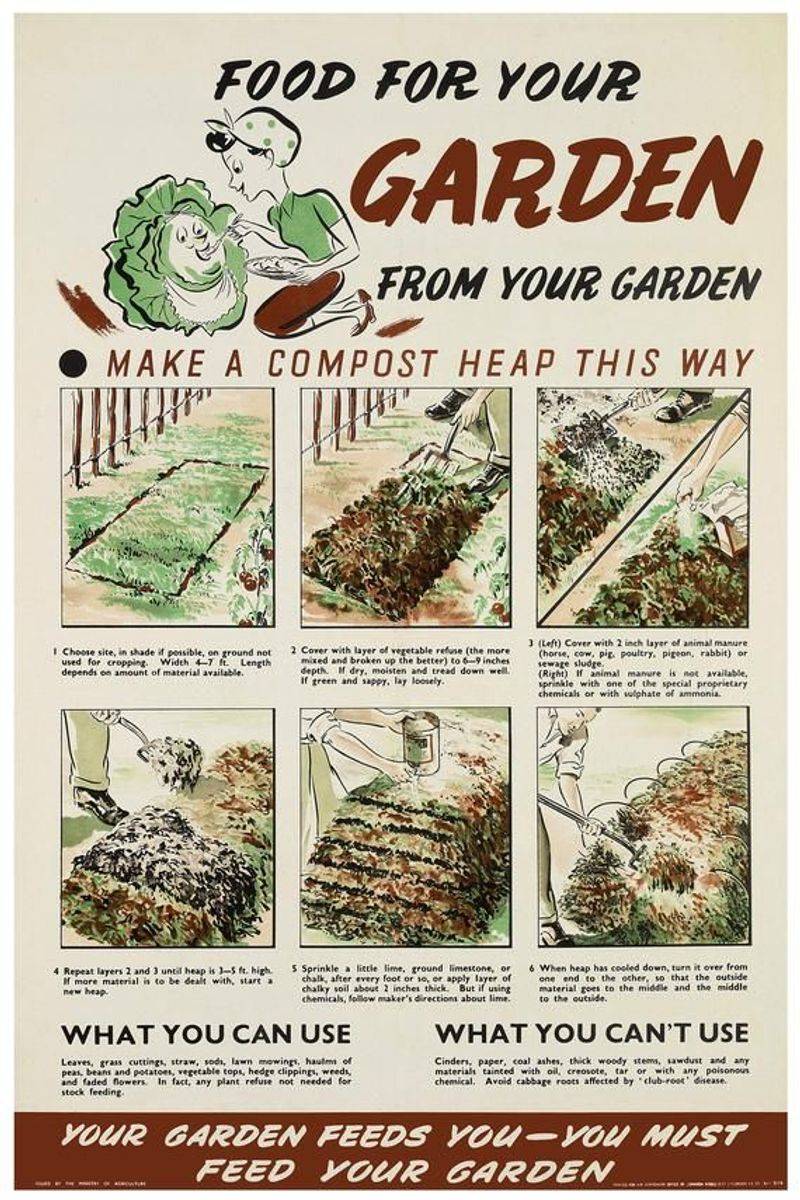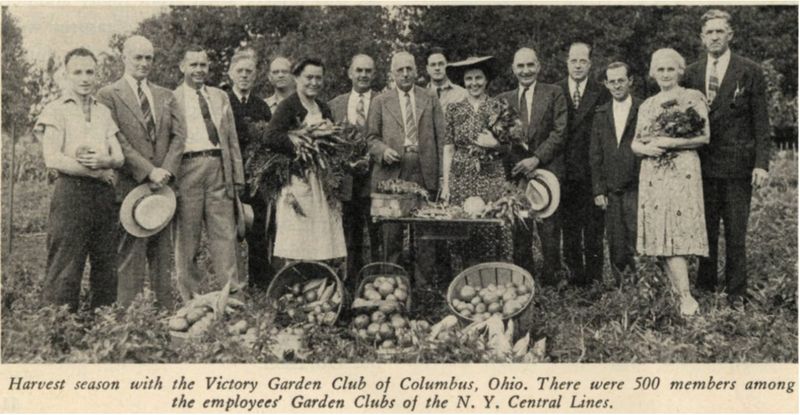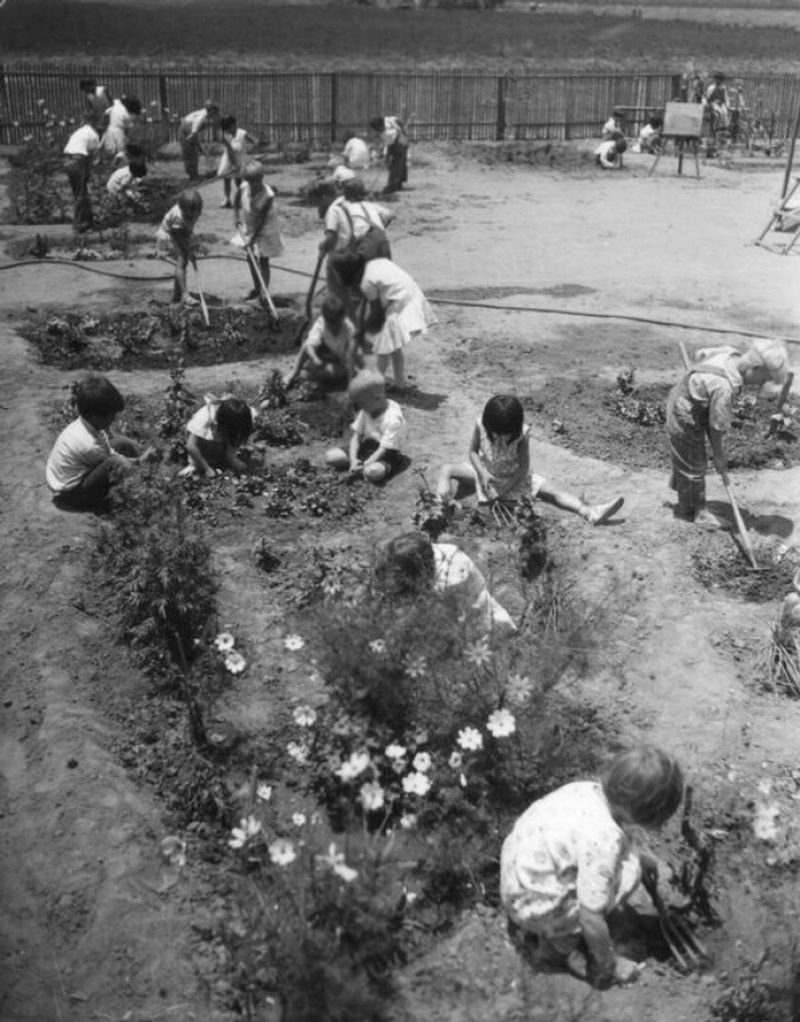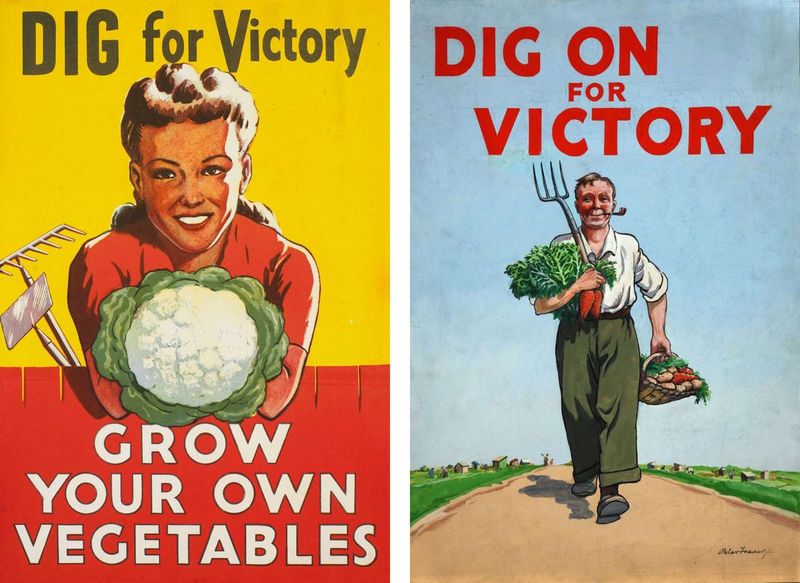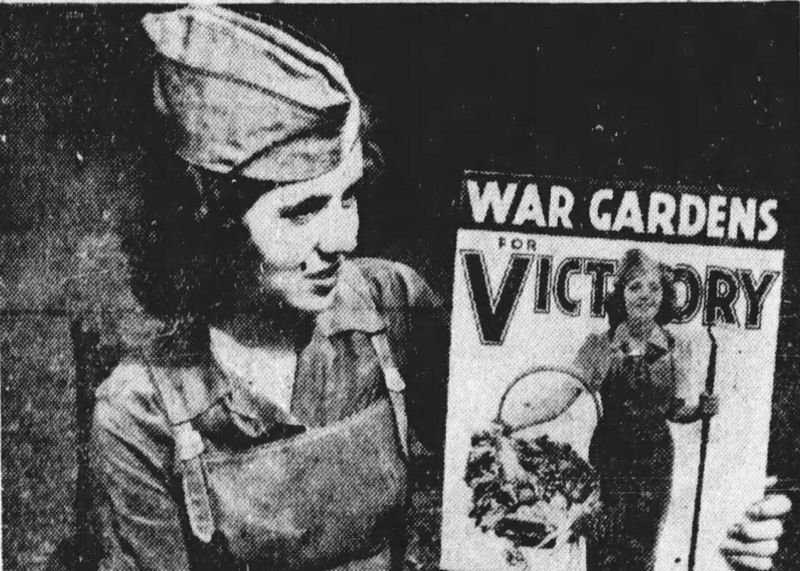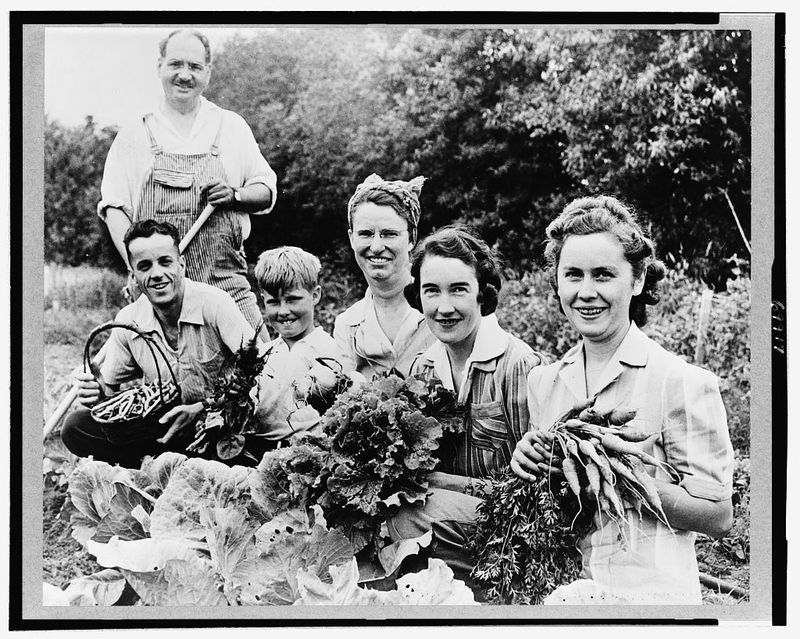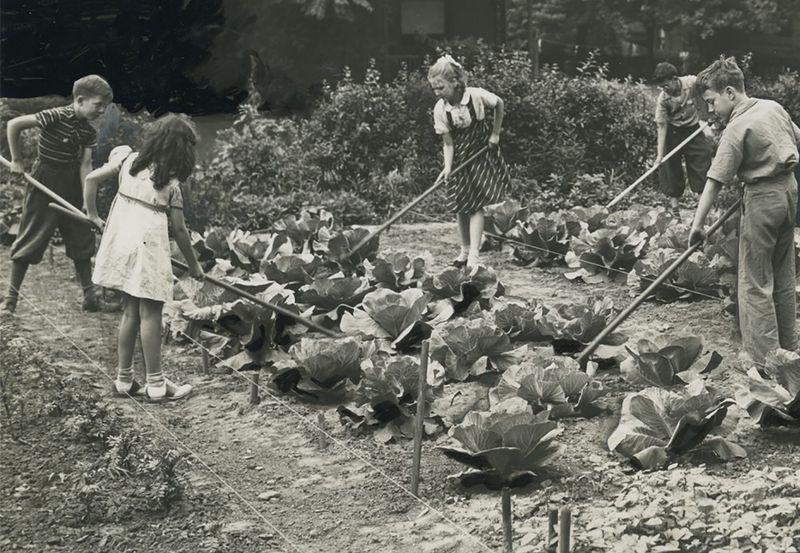WWII Victory Gardens were more than just plots of land; they were symbols of resilience, ingenuity, and community spirit. As the world faced shortages and uncertainty, gardens flourished as a testament to human resourcefulness. Today, these historical efforts offer not just lessons in self-sufficiency but also inspiration for modern home gardening.
The legacy of Victory Gardens provides timeless techniques and motivation to grow your own food, fostering both sustainability and a connection to the past. Dive into these fascinating facts to learn how you can cultivate your Victory Garden today.
1. Victory Gardens Produced 40% of America’s Vegetables
During WWII, the roar of battle was matched by the quiet rustle of leaves in backyards nationwide. Astonishingly, these gardens produced 40% of the nation’s vegetables. Homes, schools, and public parks transformed into green sanctuaries. Today, even a few containers on a balcony can emulate this impressive output. Try starting a small vegetable patch and unlock the potential hidden in seeds and soil. This grassroots movement educates and inspires, echoing the historical significance of these homegrown efforts.
2. Eleanor Roosevelt Planted One on the White House Lawn
With elegance and determination, Eleanor Roosevelt made headlines by planting a Victory Garden on the White House lawn, defying initial skepticism from the USDA. Her actions were more than symbolic; they championed homegrown food and inspired countless Americans to follow suit. Make your garden visible, and it can become a beacon for others, just as hers did. This act of leadership by example helped normalize a trend that would change the nation’s relationship with food and self-reliance.
3. City Dwellers Turned Rooftops and Empty Lots Into Gardens
In the bustling heart of cities, where land is scarce, creativity blooms. Urban dwellers transformed rooftops and vacant lots into thriving gardens during WWII. These patches of green amidst concrete landscapes were not just about food; they represented hope and ingenuity. Think of raised beds and vertical planters as tools for maximizing limited space. Whether on a rooftop or a windowsill, city gardens today continue this legacy. They’re a testament to the idea that where there’s a will—and a green thumb—there’s a way. Even in tight spaces, growth is possible.
4. Gardening Was Marketed as Patriotic Duty
During the war, the call to arms extended to gardening tools. Propaganda marketed gardening as a patriotic duty, urging citizens to grow food to support the war effort. This was more than a hobby; it was a national movement bolstered by vibrant posters and slogans. Today, gardening can still be seen as a way to contribute positively to society. Think beyond the harvest; consider it a sustainable act of resilience. Like the gardeners of the past, we too can help ease the burden on food resources, cultivating both nourishment and national pride.
5. Children Had Their Own Victory Gardens
With youthful enthusiasm, children across the country were introduced to gardening through school Victory Gardens. These plots were not just educational; they provided a sense of responsibility and accomplishment. Kids learned to tend their plants, watching their labors grow into tangible results. Imagine the excitement of small hands planting seeds and seeing them sprout. Involving the younger generation today can create a similar spark of curiosity and pride. Engaging children in gardening connects them to nature, instills life skills, and continues a tradition that once empowered a nation.
6. Wartime Posters Provided Instructions
In the world of Victory Gardens, knowledge was power. Wartime posters adorned with slogans like “Grow More in ’44” offered vital gardening tips and schedules. These vibrant guides were essential for novice gardeners. They remain valuable today as nostalgic yet practical resources for successful planting. Consider following vintage guides or plant-by-season charts. The cheerful designs and straightforward advice embody the optimism and determination of that era. Applying these timeless techniques can bring a historical touch to your gardening journey, connecting past and present methods.
7. Composting Was Essential
In a time of scarcity, ingenuity thrived. Fertilizers were hard to come by during WWII, making composting an essential practice for Victory Garden success. Families transformed kitchen scraps and yard waste into rich soil. This sustainable practice helped gardens flourish against the odds. Today, composting is just as crucial, enriching the soil naturally and reducing waste. Think of it as nature’s recycling. Starting a compost pile connects you with a time-honored tradition, nurturing your garden and the environment. It’s a simple yet powerful way to cultivate abundance.
8. People Grew Calorie-Dense Foods
During WWII, gardens were not just diverse but strategic. People prioritized calorie-dense foods like potatoes, carrots, and beans to maximize nutrition and energy. These crops were chosen for their ability to thrive in various climates and provide essential sustenance. Today, selecting hardy, productive plants can similarly enhance your garden’s yield. Consider the balance of flavor, nutrition, and resilience. This pragmatic approach to gardening ensures that your efforts not only fill plates but also fuel bodies. It’s a garden strategy rooted in history and practicality.
9. Chickens and Rabbits Were Common in Victory Yards
In Victory Gardens, the cluck of chickens and the soft rustle of rabbits were common sounds. These animals provided more than just company; they offered protein, manure, and natural pest control. Such resourcefulness was key during wartime shortages. If local laws allow, consider adding a small livestock feature to your garden. Alternatively, building pollinator habitats can also enrich your eco-system. This facet of Victory Gardens highlights the blend of agriculture and animal husbandry, showcasing a holistic approach to home food production that remains relevant today.
10. Victory Gardens Were Planted Worldwide
The spirit of Victory Gardens crossed borders, with countries like the UK, Canada, and Australia embracing the movement. Each nation’s gardens reflected local climates and cultures, turning horticulture into a global effort. Exploring international heirloom varieties and techniques today can broaden your gardening horizons. This worldwide participation during wartime highlighted the universal need for self-sufficiency and resilience. By incorporating global influences, modern gardeners can create diverse and rich ecosystems. Victory Gardens serve as a reminder that cooperation and sharing can flourish even in challenging times.
11. Gardening Boosted Morale
In the shadow of war, gardens offered more than sustenance; they were sanctuaries of solace and solidarity. The act of gardening boosted morale, providing purpose and mental relief. Tending to plants became a mindful escape from uncertainty. Today, gardening remains a therapeutic practice, fostering mindfulness and reconnection with nature. This emotional anchor was a vital part of the gardening experience during WWII and continues to be relevant. It’s a testament to the healing power of nature and the human spirit.
12. Community Gardens Flourished
During WWII, community gardens were vibrant hubs of collaboration and camaraderie. Neighbors joined forces to cultivate shared plots, pooling resources and efforts. This collective endeavor strengthened bonds and ensured food security. Today, joining or starting a local garden group can replicate this sense of community. Sharing tools and harvest continues the tradition of teamwork and mutual support. Community gardens symbolize the power of collective action, where the fruits of labor enrich more than just the soil. They’re a legacy of unity and resilience, echoing a time of shared purpose.
13. People Preserved Food by Canning
In the kitchens of WWII, canning was a vital skill. Families preserved the bounty of their Victory Gardens to last through the seasons. This practice was crucial for extending the harvest and ensuring food availability year-round. Today, learning basic preservation methods like canning, fermenting, or freezing continues this tradition of self-sufficiency. These time-tested techniques not only reduce waste but also deepen your connection to the food you grow. They’re a flavorful way to honor the ingenuity of the past.
14. The Movement Quietly Ended After the War
As peace returned, many Victory Gardens were quietly absorbed back into the urban and rural landscapes. Food rationing ended, and the urgency to grow one’s own food diminished. Yet the legacy of these gardens endures, offering inspiration for modern sustainability. Today, planting a ‘Victory Garden’ can address climate, health, or food security concerns. This historical movement serves as a springboard for contemporary gardening, emphasizing self-reliance and environmental stewardship. By keeping this tradition alive, we honor a past of resilience and look towards a future of sustainable growth.
